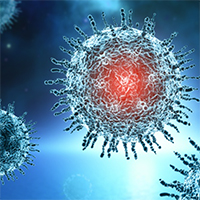Preventive home therapy for symptomatic patients affected by COVID-19 and followed by teleconsultations
Keywords:
COVID-19, SARS-CoV-2, teleconsultations, glucocorticoids in the therapy of COVID-19, LMWH in the COVID-19 therapy, home therapy of COVID-19, treatment of symptomatic patientsAbstract
In this paper we present our experience on the treatment at home of Covid+ symptomatic patients. One hundred and eighty-two subjects (111 men and 71 women) aged from 32 to 71 years have been consecutively followed at home in telemedicine from 1st September to 24th December 2020. We were informed almost twice daily in morning and evening about body temperature, symptoms (cough, shortness of breath or difficulty breathing, fatigue, muscle of body aches, headache, loss of taste or smell, sore throat, congestion or runny nose, nausea and vomiting, diarrhea), oxygen saturation measured by digital pulse oximetry and blood pressure. Our protocol of treatment was based on early use of prednisone (25 mg in the morning and 12.5 mg in the afternoon) and low molecular weight heparin (4000 UI one or two times daily) initiated just after the positivity of molecular nasopharyngeal test (about 3-4 days as mean time after initiation of symptomatology and not after 7-8 days as suggested by other protocols) and oxygen therapy when necessary. Antibiotics such as azithromycin for six days was added. It is always recommended to associate lansoprazole 30 mg to prevent gastric hemorrhages and potassium and magnesium supplements. This treatment scheme was able to reduce the risk of hospitalization as only 4 patients needed to be admitted to the Hospital, and only two in subintensive department. After negativeness of molecular nasopharyngeal test, patients were invited for a thoracic computerized tomography and laboratory evaluation of d-dimer and other data of inflammation to show eventual lung interstitial involvement characteristic of Covid-19.
References
WHO. Coronavirus Disease 2019 (COVID-19 Situation Report–57. Available from: https://www.who.int/docs/default-source/coronaviruse/situation-reports/20200317-sitrep-57-covid-19.pdf?sfvrsn=a26922f2_2
Huang C, Wang Y, Li X, Ren L, Zhao J, Hu Y, et al. Clinical features of patients infected with 2019 novel coronavirus in Wuhan, China. Lancet 2020;395:497-506.
Onder G, Rezza G, Brusaferro S. Case-fatality rate and characteristics of patients dying in relation to COVID-19 in Italy. JAMA 2020;323:1775–6.
Nardini S, Sanguinetti CM, De Benedetto F, Baccarani C, Del Donno M, Polverino M, et al. SARS-CoV-2 pandemic in Italy: Ethical and organizational considerations. Multidiscip Respir Med 2020;15:672.
Sapino A, Facchetti F, Bonoldi E, Gianatti A, Barbareschi M, on behalf of Società Italiana di Anatomia Patologica e Citologia - SIAPEC. The autopsy debate during the COVID-19 emergency: the Italian experience. Virchows Arch 2020;476:821-3.
Johns Hopkins University and Medicine [Internet]. Coronavirus Resource Center. COVID-19 Dashboard by the Center for Systems Science and Engineering (CSSE) at Johns Hopkins (JHU). Available from: https://coronavirus.jhu.edu/map.html
Annesi-Maesano I, Maesano C, D’Amato M, D’Amato G. Pros and cons for the role of air pollution on the COVID-19 development. Authorea. December 20, 2020. doi: 10.22541/au.160846652.24234459/v1
Pomara C, Li Volti G, Cappello F. COVID-19 deaths: are we sure it is pneumonia? Please, autopsy, autopsy, autopsy! J Clin Med 2020;9:E1259.
Mehta P, McAuley DF, Brown M, Sanchez E, Tattersall RS, Man-son JJ, et al. COVID-19: consider cytokine storm syn-dromes and immunosuppression. Lancet 2020;395:1033-4.
Dimer NA, Canto-Soares ND, Santos-Teixeira LD, Goulart BNG. The COVID-19 pandemic and the implementation of telehealth in speech-language and hearing for patients at home: an experience report. Codas 2020;32:e20200144.
Tenforde AS, Borgstrom H, Polich G, Steere H, Davis IS, Cotton K, et al. Outpatient physical, occupational, and speech therapy synchronous telemedicine: A survey study of patient satisfaction with virtual visits during the COVID-19 pandemic. Am J Phys Med Rehabil. 2020;99:977-81.
Tenforde A Iaccarino M Borgstrom H, Hefner JE, Silver J, Ahmed M, et al. Telemedicine during COVID-19 for outpatient sports and musculoskeletal medicine physicians. PM R 2020;12:926-32.
Yang Li , Xian Zhou , Tao Li , Shiji Chan , Yiqi Yu , Jing-Wen Ai , et al. Corticosteroid prevents COVID-19 progression within its therapeutic window: a multicentre, proof-of-concept, observational study. Emerg Microbes Infect 2020;9:1869-77.
Shang L, Zhao J, Hu Y, Du R, Cao B. On the use of corticosteroids for 2019-nCoV pneumonia. Lancet 2020;395:683-4.
Echeverría-Esnal D, Martin-Ontiyuelo C, Navarrete-Rouco ME, De-Antonio Cuscó M, Ferrández O, Horcajada JP, Grau S. Azithromycin in the treatment of COVID-19: a review. Expert Rev Anti Infect Ther 2020 6:1-17.

Published
Issue
Section
License
Mattioli 1885 has chosen to apply the Creative Commons Attribution NonCommercial 4.0 International License (CC BY-NC 4.0) to all manuscripts to be published.




